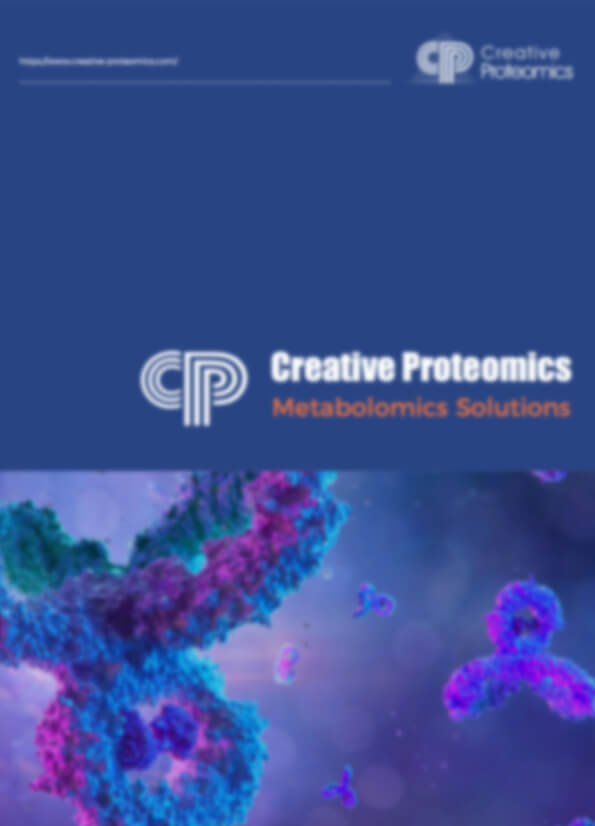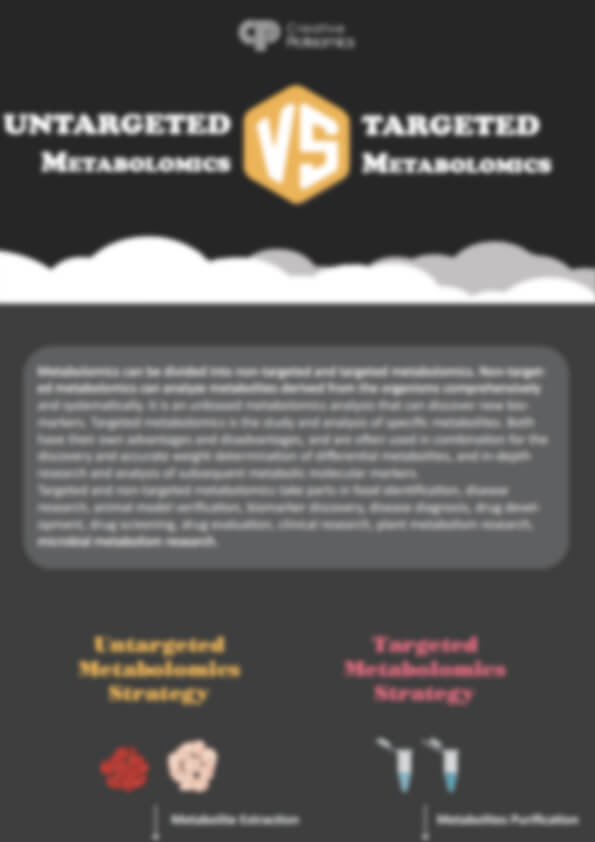Glycolic Acid Analysis Service
Creative Proteomics specializes in precision-driven analytical solutions for glycolic acid, a critical compound in industries ranging from cosmetics to biodegradable materials. With platforms like HPLC-RID, LC-MS/MS, and GC-MS, we deliver accurate quantification, purity assessment, and metabolic profiling of glycolic acid and its derivatives. Our services address cross-sector challenges, including quality control in polymer synthesis, regulatory compliance in cosmetic formulations, and environmental monitoring of industrial effluents. By combining technical expertise with scalable workflows, we empower clients to optimize product performance, ensure safety standards, and accelerate innovation in sustainable material development.
Submit Your Request Now
×- What We Provide
- Advantages
- Technology Platform
- Sample Requirements
- FAQ
- Publications
What is Glycolic Acid?
Glycolic acid (GA), chemically known as hydroxyacetic acid, is the simplest of the α-hydroxy acids (AHAs) and plays a pivotal role in a wide range of biochemical and industrial processes. It is a colorless, odorless, and hygroscopic liquid that is soluble in water and polar solvents, with the molecular formula C₂H₄O₃. Due to its unique chemical properties, glycolic acid has found applications in diverse fields, including dermatology, biochemistry, and cosmetic formulations.
As a naturally occurring compound, glycolic acid can be derived from plant sources such as sugarcane or synthesized through chemical processes. In biochemical contexts, glycolic acid acts as an important intermediate in the glyoxylate cycle, a key metabolic pathway involved in cellular respiration.
Glycolic Acid Analysis Service Offered by Creative Proteomics
- Glycolic Acid Quantitative Analysis: Precise measurement of glycolic acid concentrations in biological samples (tissue, plant, bacterial cultures, cells) and industrial products.
- Metabolic Pathway Profiling: Detection of intermediates in glycolic acid-associated pathways, such as glyoxylate, oxalate, and citrate cycle metabolites.
- Purity Assessment: HPLC-based evaluation of glycolic acid purity for pharmaceutical and cosmetic applications.
- Customized Solutions: Method development for novel matrices (e.g., adhesives, polymers) and regulatory compliance testing.
Detected Glycolic Acid Metabolites and Pathway Intermediates
| Metabolite | Pathway | Biological Role |
|---|---|---|
| Glycolic Acid | Glyoxylate Metabolism | Primary substrate for oxalate synthesis; biomarker for PH1 & ethylene glycol toxicity |
| Oxalate | Oxalate Biosynthesis | End-product linked to kidney stone formation; regulated by liver enzymes |
| Glyoxylic Acid | Glyoxylate Cycle | Central intermediate connecting glycolysis & TCA cycle in plants/microbes |
| Citrate | Citrate Cycle (TCA) | Energy metabolism hub; modulates fatty acid synthesis & epigenetic regulation |
| Pyruvate | Pyruvate Dehydrogenase Complex | Crossroads of glycolysis, gluconeogenesis, and amino acid metabolism |
| Isocitrate | Glyoxylate/TCA Cycle | Branch point for glyoxylate shunt (via isocitrate lyase) in lipid-to-carb conversion |
| Malate | Glyoxylate Cycle & Malate Shuttle | Transports reducing equivalents; precursor for gluconeogenesis in seedlings |
| Succinate | TCA Cycle | Signaling molecule influencing hypoxia response & immune function |
| Acetyl-CoA | Fatty Acid β-Oxidation | Key substrate for glyoxylate cycle entry; regulates histone acetylation |
| Glutamate | Amino Acid Metabolism | Linked to glyoxylate transamination producing glycine in detoxification pathways |
| Glycerate | Photorespiration | Byproduct of glycolate metabolism in plants; recycled via Calvin cycle |
| 2-Phosphoglycolate | Photorespiratory Pathway | Critical in C3 plant metabolism; indicator of RuBisCO oxygenation activity |
Advantages of Glycolic Acid Assay
- Comprehensive Detection: Dual-platform analysis using LC-MS/MS and GC-MS ensures broad metabolite coverage and accurate quantification.
- High Sensitivity and Accuracy: Detection limits as low as 0.1 ng/mL with inter-batch variability under 5% using isotope-labeled internal standards.
- Metabolic Flux Analysis: Real-time tracking of carbon flow to assess enzymatic activity and pathway regulation.
- Fast Turnaround and High Throughput: Process up to 1,000 samples/month with results in 10-20 business days.
- Robust Data Analysis: Advanced interpretation using MS/MS spectral libraries and KEGG-based pathway mapping for actionable insights.
- Flexible Sample Handling: Supports diverse sample types with adaptive protocols for low-volume or degraded samples.
Technology Platforms for Glycolic Acid Analysis Service
HPLC-UV (High-Performance Liquid Chromatography with UV Detection)

Agilent 1260 Infinity II HPLC (Figure from Agilent)
GC-MS (Gas Chromatography-Mass Spectrometry)

Agilent 7890B-5977B (Figure from Agilent)
LC-MS/MS (Liquid Chromatography-Tandem Mass Spectrometry)

SCIEX Triple Quad™ 6500+ (Figure from Sciex)
Sample Requirements for Glycolic Acid Analysis Service
| Sample Type | Minimum Sample Volume | Storage Conditions | Notes |
|---|---|---|---|
| Blood Plasma | 0.5 mL | -80°C | Use EDTA or heparin tubes for collection. |
| Serum | 0.5 mL | -80°C | Centrifuge after clotting. |
| Urine | 1 mL | -80°C | Collect in sterile containers. |
| Tissue Extracts | 50 mg | -80°C | Mince tissue and freeze immediately after collection. |
| Cell Culture Supernatants | 1 mL | -80°C | Centrifuge and store supernatant at -80°C. |
| Skin Creams/Topical Products | 0.1 g | Room Temperature | Ensure homogenization if necessary. |
| Plasma/Serum (Metabolomics) | 0.5 mL | -80°C | Separate plasma/serum within 1 hour of collection. |
| Saliva | 1 mL | -80°C | Avoid contamination with food or drink. |
| Hair Samples | 10-20 mg | -80°C | Use sterile tools for collection. |
| Fecal Samples | 1 g | -80°C | Collect fresh samples in sterile containers. |
Applications of Glycolic Acid Assay Service
Cosmetics and Skincare
Ensures optimal glycolic acid concentration and effectiveness in exfoliants and moisturizers.
Biochemical and Metabolic Research
Supports the study of glycolic acid in metabolic pathways like the glyoxylate cycle and cellular respiration.
Polymer and Biodegradable Plastics
Optimizes production of biodegradable polymers, including polyglycolic acid (PGA).
Agriculture and Environmental Research
Analyzes glycolic acid concentration in agricultural products, ensuring environmental safety.
Food and Beverage
Verifies glycolic acid levels in food preservatives and acidulants.
Chemical and Industrial Applications
Supports quality control in the production of textiles, adhesives, and coatings.
Demo
FAQ of Glycolic Acid Analysis Service
How do you ensure data accuracy and reliability?
We use validated protocols, internal standards, and advanced software for peak integration and data analysis, ensuring high precision and reproducibility.
Can you analyze glycolic acid in industrial wastewater?
Yes, we provide specialized methods for detecting glycolic acid in environmental samples, including wastewater from manufacturing processes.
Do you provide technical support for sample preparation?
Yes, our team offers free consultation to optimize sample collection, storage, and preparation for accurate results.
Can you quantify glycolic acid in biodegradable polymers?
Yes, we have expertise in analyzing glycolic acid content in polymers like polyglycolic acid (PGA) for material development and quality control.
What is the detection limit for glycolic acid in your analysis?
Our LC-MS/MS method achieves a detection limit of 0.05 µg/mL, ensuring sensitivity even at trace levels.
How do I interpret the results provided in the report?
Our reports include clear explanations, annotated chromatograms, and statistical summaries to help you easily interpret the data.
Learn about other Q&A.
Glycolic Acid Analysis Service Case Study
Publications
Here are some of the metabolomics-related papers published by our clients:

- A non-probiotic fermented soy product reduces total and ldl cholesterol: A randomized controlled crossover trial. 2021. https://doi.org/10.3390/nu13020535
- Resting natural killer cell homeostasis relies on tryptophan/NAD+ metabolism and HIF‐1α. 2023. https://doi.org/10.15252/embr.202256156
- Enhance trial: effects of NAD3® on hallmarks of aging and clinical endpoints of health in middle aged adults: a subset analysis focused on blood cell NAD+ concentrations and lipid metabolism. 2022. https://doi.org/10.3390/physiologia2010002
- Function and regulation of a steroidogenic CYP450 enzyme in the mitochondrion of Toxoplasma gondii. 2023. https://doi.org/10.1371/journal.ppat.1011566
References
- López Ibáñez de Aldecoa, Alejandra, Francisco Velasco Roldán, and César Menor-Salván. "Natural pyrrhotite as a catalyst in prebiotic chemical evolution." Life 3.3 (2013): 502-517. https://doi.org/10.3390/life3030502
- Lim, Y. B., et al. "Aqueous chemistry and its role in secondary organic aerosol (SOA) formation." Atmospheric Chemistry and Physics 10.21 (2010): 10521-10539. https://doi.org/10.5194/acp-10-10521-2010
- Bouatra, Souhaila; Aziat, Farid; Mandal, Rupasri; Chi Guo, An; R. Wilson, Michael; Knox, Craig; et al. (2015). Typical GC-MS total ion chromatogram of organic acids extracted from human urine. PLOS ONE. https://doi.org/10.1371/journal.pone.0073076.g003












